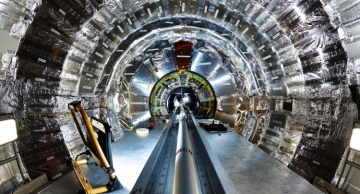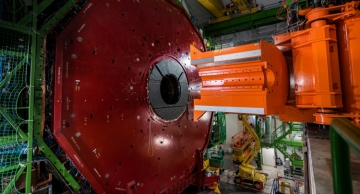Reaching another major milestone of the Long shutdown 2 and performing the biggest upgrade of the experimental beam vacuum system since the first operation of CMS in 2008. After several years of complex design, manufacture and planning, the CMS…
As for any other instrument, the CMS experiment needs a “quiet” environment to take data, with the lowest level of background noise. In the CMS detector, background noise is mainly due to energetic particles generated at high eta (i.e. close to the…
In February, the CMS and MoEDAL collaborations at CERN signed an agreement to hand over to MoEDAL a section of the LHC beam pipe that was located inside CMS between 2008 and 2013. The delicate object, 6 metres long and made of beryllium, will now be…
The CMS detector is built from several different layers, surrounding the beam pipe in which the LHC beams collide. The subdetector that is closest to the collisions is the pixel detector. It has a functionality similar to a digital camera taking 40…
The Year-End Technical Stop or YETS, when the LHC takes its annual break, seemed like a quiet time to those outside CERN. After all, there were no collisions taking place and the CMS detector was not operating 24-hours-a-day, seven-days-a-week.…





